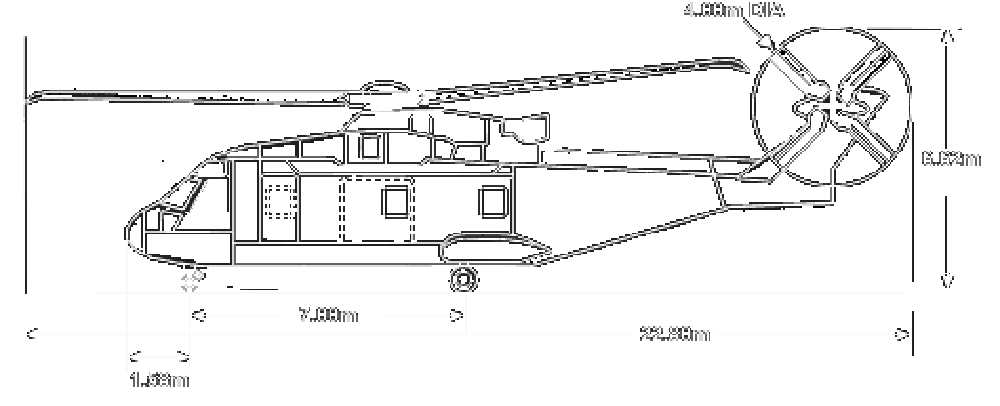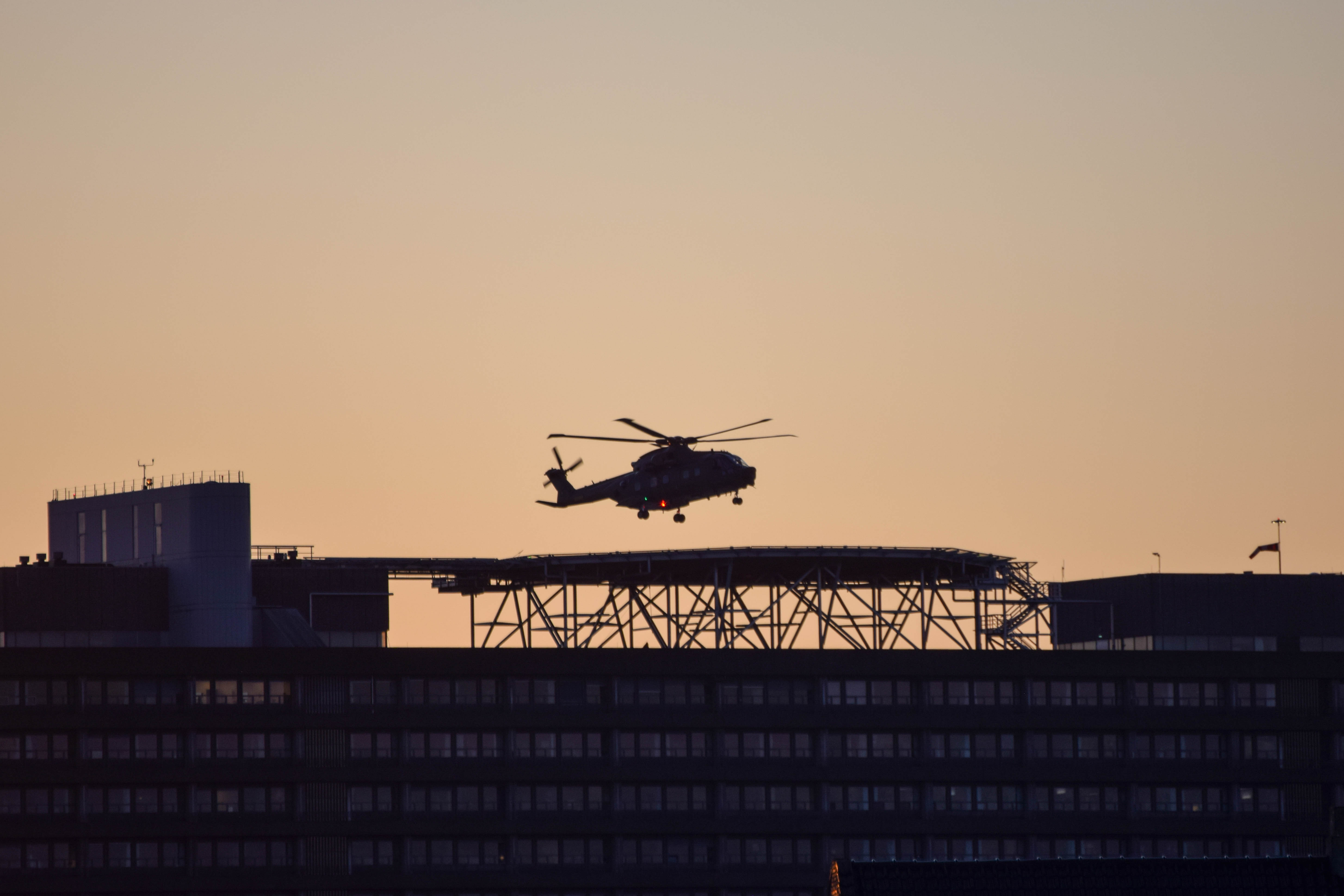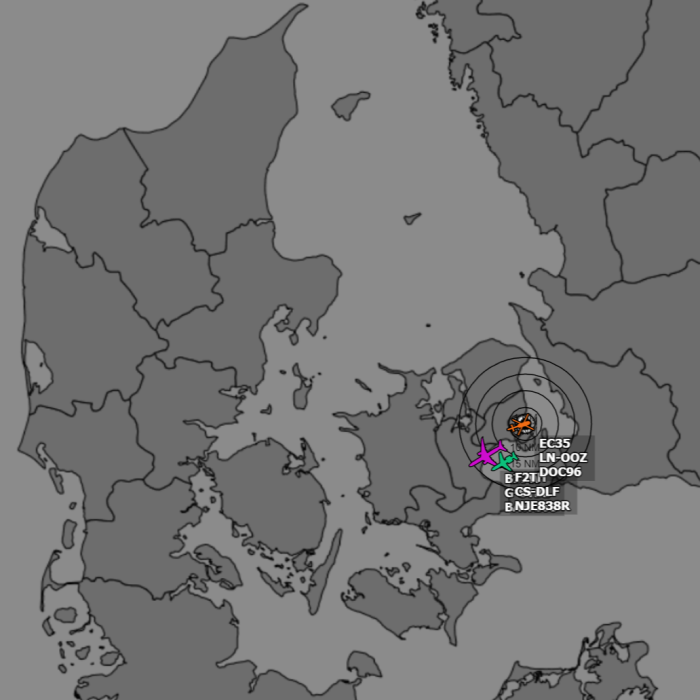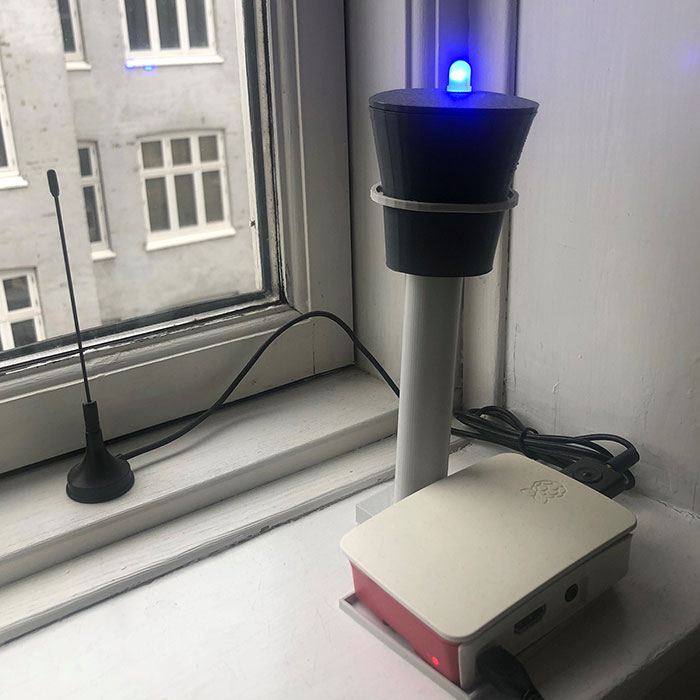Create a service to run the program (and log the output):
[unit]
Description=Aircraft SpotterLight by JHA DESIGN
Wants=network-online.target
After=network-online.target
[Service]
ExecStart=/usr/bin/python3 -u ac_spotterlight.py
WorkingDirectory=/home/pi/ac_spotterlight
Restart=always
RestartSec=300
User=root
Nice=10
[Install]
WantedBy=multi-user.target
ac_spotterlight - how to add this script as a service on the RPi
#should probably move animations to a separate file. colors.py contain HTML colors to RGB.
import re
import os
import sys
import signal
import board
import neopixel
import requests
import time
import json
from math import radians, cos, sin, asin, sqrt
from colors import *
#number of Pixels
numpix = 1
ORDER = neopixel.RGB
# Neopixels add on Pin 18 PWM pin, with 1 pixel
pixels = neopixel.NeoPixel(board.D18, numpix, brightness=0.1, auto_write=False, pixel_order=ORDER)
center_point = [{'lat': 55.699531, 'lng': 12.585264}]
radius = 50.00 # in kilometer
# Test with history file remember to comment out live stream
#with open('history_87.json') as json_file:
# json_dump = json.load(json_file)
# Signal Handler to Catch CTRL+C commands and turn off the lights
def signal_handler(signal, frame):
pixels.fill((0, 0, 0))
pixels.show()
sys.exit(0)
signal.signal(signal.SIGINT, signal_handler)
#print('Press Ctrl+C')
def haversine(lon1, lat1, lon2, lat2):
"""
Calculate the great circle distance between two points
on the earth (specified in decimal degrees)
"""
# convert decimal degrees to radians
lon1, lat1, lon2, lat2 = map(radians, [lon1, lat1, lon2, lat2])
# haversine formula
dlon = lon2 - lon1
dlat = lat2 - lat1
a = sin(dlat/2)**2 + cos(lat1) * cos(lat2) * sin(dlon/2)**2
c = 2 * asin(sqrt(a))
r = 6371 # Radius of earth in kilometers. Use 3956 for miles
return c * r
def in_or_out(tlat, tlon):
lat1 = center_point[0]['lat']
lon1 = center_point[0]['lng']
a = haversine(lon1, lat1, tlon, tlat)
#print('Distance (km) : ', a)
if a <= radius:
#print('Inside the area')
return a
else:
#print('Outside the area')
return 9999
#pulse animation
smoothness = 100
def pulse(color):
for ii in range(smoothness):
pwm_val = 100.0*(1.0 - abs((2.0*(ii/smoothness))-1.0))
pwm_val2 = round(pwm_val / 100,2)
print(pwm_val2)
pixels.brightness = pwm_val2
pixels.fill((color))
pixels.show()
# in order to pulse we need a pause/sleep. Lets set this depending on the range. The closer, the faster the pulse.
inRange = in_or_out(foundLat[0],foundLon[0])
print(time.ctime(), "found", dictFind[0]['name'], "range: ", inRange)
if(inRange > 5):
time.sleep(inRange / 1000)
elif(inRange <= 5):
time.sleep(0.01)
time.sleep(0.5)
def defaultAnim(color):
if foundLat[0] and foundLon[0] != None:
inRange = in_or_out(foundLat[0],foundLon[0])
if inRange > 3:
pixels.brightness = round(1.0 - (inRange/5)/10,1) #divide the range of max 50km by 5, then by 10 and substract it from the max brightness
print(time.ctime(), "found", dictFind[0]['name'], "range: ", inRange)
else:
pixels.brightness = 1.0 #it is less than 3km away lets shine bright
else:
pixels.brightness = 0.5 #value between 0.0 and 1.0 (max). Increase 0.1 every time 5km mark is passed from 50km to 0km.
pixels.fill((color))
pixels.show()
print(time.ctime(), "found", dictFind[0]['name'], "range: ", inRange)
def noAnim(color):
pixels.brightness = 1.0
pixels.fill((color))
pixels.show()
print(time.ctime(), "found", dictFind[0]['name'])
interestingFlights = [
{"name": "Danish Air Force",
"callSign":["DAF","RES","MERLN"],
"icaoHex": ["45f42c", "45f42e", "45f431", "45f432", "45f434", "45f436", "45f437", "45f438", "45f42d", "45f42f", "45f430", "45f433", "45f435"],
"color": green,
"animation": defaultAnim,
"priority": "1"
},
{
"name": "HeliDoc",
"callSign": ["DOC"],
"icaoHex": ["47879d", "47a1ce", "47a20d", "47a210", "4784b1", "4783ca", "4783c9", "4783b9"],
"color": yellow,
"animation": noAnim,
"priority": "1"
},
{
"name": "Vandflyet",
"callSign": ["DNU.*W"],
"icaoHex": ["45ba61",],
"color": blue,
"animation": pulse,
"priority": "1"
}
]
def findhexCode(hexCode):
for d in interestingFlights:
for h in d['icaoHex']:
if h == hexCode:
return d
return None
def findcallSign(callSign):
for d in interestingFlights:
for cs in d['callSign']:
#if callSign.find(cs) == 0:
if re.search(cs, callSign):
return d
return None
while True:
json_dump = requests.get("http://{}:8080/data/aircraft.json".format("192.168.0.120")).json()
found_flt = 0
dictFind = [None,None]
foundLat = [None,None]
foundLon = [None,None]
#look for the flights in the json file
for entry in json_dump["aircraft"]:
if "hex" in entry:
dictFind[found_flt] = findhexCode(entry["hex"])
if (dictFind[found_flt] == None):
if "flight" in entry:
dictFind[found_flt] = findcallSign(entry["flight"])
#dictFind.append(findcallSign(entry["flight"]))
if (dictFind[found_flt] != None):
if "lat" in entry and "lon" in entry:
foundLat[found_flt] = entry["lat"]
foundLon[found_flt] = entry["lon"]
if (found_flt > 0):
if (in_or_out(foundLat[0],foundLon[0]) > in_or_out(foundLat[1],foundLon[1])):
dictFind[0] = dictFind[1]
foundLat[0] = foundLat[1]
foundLon[0] = foundLon[1]
found_flt = 1
#print(" ")
#print("DEBUG: dictFind[0] = ",dictFind[0])
#print("DEBUG: dictFind[1] = ",dictFind[1])
if(found_flt == 1):
dictFind[0]['animation'](dictFind[0]['color'])
else:
pixels.brightness = 1.0
pixels.fill(black)
pixels.show()
#print("lights off.. scanning for aircraft.. blip.. blip.. blip..")
time.sleep(0.05)
signal.pause()
colors.py
maroon = (128, 0, 0)
darkred = (139, 0, 0)
brown = (165, 42, 42)
firebrick = (178, 34, 34)
crimson = (220, 20, 60)
red = (255, 0, 0)
tomato = (255, 99, 71)
coral = (255, 127, 80)
indianred = (205, 92, 92)
lightcoral = (240, 128, 128)
darksalmon = (233, 150, 122)
salmon = (250, 128, 114)
lightsalmon = (255, 160, 122)
orangered = (255, 69, 0)
darkorange = (255, 140, 0)
orange = (255, 165, 0)
gold = (255, 215, 0)
darkgoldenrod = (184, 134, 11)
goldenrod = (218, 165, 32)
palegoldenrod = (238, 232, 170)
darkkhaki = (189, 183, 107)
khaki = (240, 230, 140)
olive = (128, 128, 0)
yellow = (255, 255, 0)
yellowgreen = (154, 205, 50)
darkolivegreen = (85, 107, 47)
olivedrab = (107, 142, 35)
lawngreen = (124, 252, 0)
chartreuse = (127, 255, 0)
greenyellow = (173, 255, 47)
darkgreen = (0, 100, 0)
green = (0, 128, 0)
forestgreen = (34, 139, 34)
lime = (0, 255, 0)
limegreen = (50, 205, 50)
lightgreen = (144, 238, 144)
palegreen = (152, 251, 152)
darkseagreen = (143, 188, 143)
mediumspringgreen = (0, 250, 154)
springgreen = (0, 255, 127)
seagreen = (46, 139, 87)
mediumaquamarine = (102, 205, 170)
mediumseagreen = (60, 179, 113)
lightseagreen = (32, 178, 170)
darkslategray = (47, 79, 79)
teal = (0, 128, 128)
darkcyan = (0, 139, 139)
aqua = (0, 255, 255)
cyan = (0, 255, 255)
lightcyan = (224, 255, 255)
darkturquoise = (0, 206, 209)
turquoise = (64, 224, 208)
mediumturquoise = (72, 209, 204)
paleturquoise = (175, 238, 238)
aquamarine = (127, 255, 212)
powderblue = (176, 224, 230)
cadetblue = (95, 158, 160)
steelblue = (70, 130, 180)
cornflowerblue = (100, 149, 237)
deepskyblue = (0, 191, 255)
dodgerblue = (30, 144, 255)
lightblue = (173, 216, 230)
skyblue = (135, 206, 235)
lightskyblue = (135, 206, 250)
midnightblue = (25, 25, 112)
navy = (0, 0, 128)
darkblue = (0, 0, 139)
mediumblue = (0, 0, 205)
blue = (0, 0, 255)
royalblue = (65, 105, 225)
blueviolet = (138, 43, 226)
indigo = (75, 0, 130)
darkslateblue = (72, 61, 139)
slateblue = (106, 90, 205)
mediumslateblue = (123, 104, 238)
mediumpurple = (147, 112, 219)
darkmagenta = (139, 0, 139)
darkviolet = (148, 0, 211)
darkorchid = (153, 50, 204)
mediumorchid = (186, 85, 211)
purple = (128, 0, 128)
thistle = (216, 191, 216)
plum = (221, 160, 221)
violet = (238, 130, 238)
magenta = (255, 0, 255)
orchid = (218, 112, 214)
mediumvioletred = (199, 21, 133)
palevioletred = (219, 112, 147)
deeppink = (255, 20, 147)
hotpink = (255, 105, 180)
lightpink = (255, 182, 193)
pink = (255, 192, 203)
antiquewhite = (250, 235, 215)
beige = (245, 245, 220)
bisque = (255, 228, 196)
blanchedalmond = (255, 235, 205)
wheat = (245, 222, 179)
cornsilk = (255, 248, 220)
lemonchiffon = (255, 250, 205)
lightgoldenrodyellow = (250, 250, 210)
lightyellow = (255, 255, 224)
saddlebrown = (139, 69, 19)
sienna = (160, 82, 45)
chocolate = (210, 105, 30)
peru = (205, 133, 63)
sandybrown = (244, 164, 96)
burlywood = (222, 184, 135)
tan = (210, 180, 140)
rosybrown = (188, 143, 143)
moccasin = (255, 228, 181)
navajowhite = (255, 222, 173)
peachpuff = (255, 218, 185)
mistyrose = (255, 228, 225)
lavenderblush = (255, 240, 245)
linen = (250, 240, 230)
oldlace = (253, 245, 230)
papayawhip = (255, 239, 213)
seashell = (255, 245, 238)
mintcream = (245, 255, 250)
slategray = (112, 128, 144)
lightslategray = (119, 136, 153)
lightsteelblue = (176, 196, 222)
lavender = (230, 230, 250)
floralwhite = (255, 250, 240)
aliceblue = (240, 248, 255)
ghostwhite = (248, 248, 255)
honeydew = (240, 255, 240)
ivory = (255, 255, 240)
azure = (240, 255, 255)
snow = (255, 250, 250)
black = (0, 0, 0)
dimgray = (105, 105, 105)
gray = (128, 128, 128)
darkgray = (169, 169, 169)
silver = (192, 192, 192)
lightgray = (211, 211, 211)
gainsboro = (220, 220, 220)
whitesmoke = (245, 245, 245)
white = (255, 255, 255)




